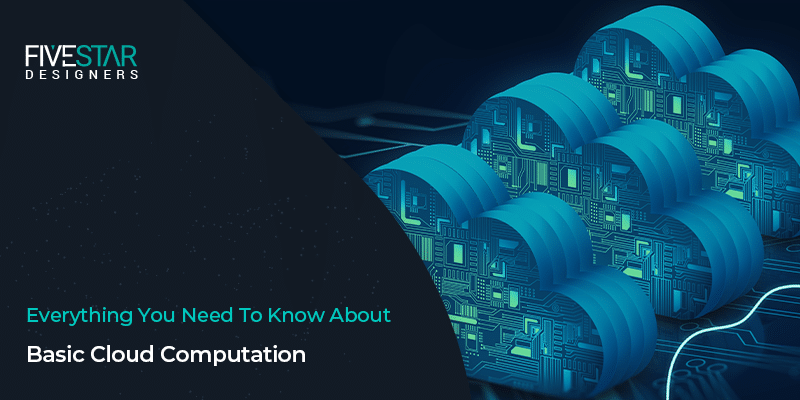We’ve all seen in tech movies how software houses and app development companies have gigantic dedicated server rooms, which looks cool but are incredibly unrealistic as now most mobile app development companies opt for Cloud.
Cloud Computation has made every app developer’s life easier tenfold. Where developing a single app requires a whole room filled with powerful expensive computers and software, Cloud computing makes it so one can create apps even in the comfort of one’s bedroom.
The Three Pillars of Cloud Computing
Cloud computation can be broken down into three main models. Each one has a different purpose and targets a specific audience.
1. Infrastructure as a Service (IaaS)
IaaS is by far the most known and popular type of Cloud computing service. If you need more power or storage, you can outsource it by opting for Infrastructure as a Service. This is incredibly helpful, especially for solo app developers or startup app development agencies.
Why IaaS Matters for App Development
- Scalability: Need more computing power? Spin up a new virtual machine in seconds.
- Cost-Effective: No upfront hardware investments—just pay for what you use.
- Flexibility: Deploy on multiple operating systems, tweak configurations, and customize environments for Android development or cross-platform apps.
IaaS is ideal when you need full control over the backend infrastructure but don’t want the burden of maintaining physical servers.
2. Platform as a Service (PaaS)
Call it being lazy or efficient, PaaS gets the job done the easy way. Platform as a Service offers you the complete playground to mess around without worrying about backend complexities and managing databases like renting out a furnished apartment.
Why PaaS Is a Game-Changer for App Developers
- Rapid App Development: Focus on writing code instead of configuring servers.
- Built-in Tools: Includes databases, analytics, and DevOps pipelines.
- Seamless Deployment: Push code updates without downtime or infrastructure headaches.
This model of Cloud Computation mainly targets fast-paced app development companies that need to pump out multiple projects in a limited amount of time creating a faster time-to-market environment by reducing development friction.
3. Software as a Service (SaaS)
SaaS is the oldest model of cloud computation dating back to the 1960s. You can basically gain access to any kind of outsourced service or software that you might not have available to you at the moment whether it be technical, financial, or structural issues.
Why SaaS Matters in App Development
- Low Maintenance: No installations, no updates—everything runs in the cloud.
- Accessibility: Use software from any device with an internet connection.
- Subscription-Based: Predictable pricing models keep costs manageable.
Software as a service is by far the most used model of cloud computation by startups as well as established app development agencies. With just an internet connection you can gain access to any kind of software as if renting out a DVD
The Deployment Models
There is another way how we can classify types of cloud computation and that is based on deployment. There are different types of cloud deployments, each with its own traits and quirks, particularly when it comes to accessibility, security, and performance.
Public Cloud
Public Clouds are owned by third-party providers that offer their infrastructure and services to the public over the internet, usually in a pay-as-you-go method. Public Clouds are very common as they are highly scalable and relatively cheap to keep around.
Best for: Startups, small businesses, and projects that need flexible scaling.
Private Cloud
Private Clouds generally offers the same services as the public ones except for the fact it is used exclusively by a single company or entity which gives greater control over security and customization to facilitate strict compliance requirements.
Best for: Large enterprises, financial institutions, healthcare providers.
Hybrid Cloud
As you couldve guessed, Hybrid Clouds possesses the best of both worlds, the scalability and power of a public cloud that can manage peak workload and the high level security of a private cloud that safeguards sensitive data and meets the compliance requirements.
Best for: Businesses that need high security but also want public cloud scalability.
Multi-Cloud:
Although it might seem counter intuitive, Multi-cloud is the strategic usage of two or more clouds for and of different services. This invokes maximum level of flexibility where you are not dependent on a single provider and take every vendor’s strengths to your advantage
Best for: Enterprises needing maximum flexibility and risk management.
Final Verdict
When it comes to modern-day mobile app development, opting for cloud computation is not only the right choice but the smart choice to get maximum efficiency out of minimum resources. It is a great way to get you started even as a solo app developer.
If you’re still not sure if going full Cloud is not the right option for you, Here are few of the many more reasons why every mobile app development company should embrace cloud computing:
- Global Reach: Deploy apps closer to users with distributed cloud regions.
- High Availability: automated failover mechanisms, multi-zone redundancy, and load balancing to achieve maximum fault tolerance
- Security Enhancements: E2E encryption, IAM and automated compliance auditing to reinforce security measures and adhere to compliance.
- Better Collaboration: Cross functional teamwork to facilitate agile workflows and remote synchronization.
In the world of app development, cloud computing isn’t just an advantage—it’s the backbone of performance, scalability, and reliability.
So, if you’re looking to build the next big Android app development project or scale your app development agency, embracing the cloud is your smartest move yet.



